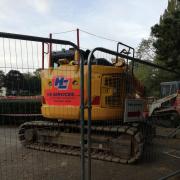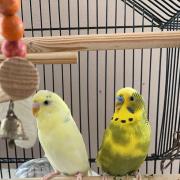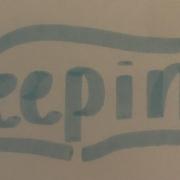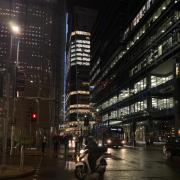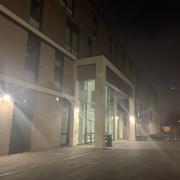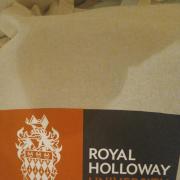
The many stories of COVID-19 have haunted local newspapers and social media as we learn about its evolution. On the surface, COVID-19 has been reduced to growing numbers, facts and figures in the media. However, its killer nature is defined through its impact on society. I was given the opportunity to interview an NHS Consultant who has chosen to remain anonymous. He recounts the harsh realities on the front-line as a hero who continues to save lives.
‘I don’t think people are aware of the pressure we are under’ NHS Consultant states. ‘The public aren’t aware of the true scale of the virus’.
Recently, the UK has seen high numbers of fines up and down the country for throwing parties, social gatherings and household mixing. According to the National Police Chiefs’ Council (NPCC) 20,223 fixed penalty notices were issued during lockdown restrictions between 27th March and 19th October. ‘It’s like people are making their own minds up about what they should and shouldn’t do’ NHS Consultant comments. He believes that for some, the only wake-up call to the scale of the virus is if someone they know has the virus, or someone who has passed. ‘It’s incredibly worrying, even disappointing. NHS workers work hard to protect and save as many lives as we can, as well as our own’
The pandemic like many other business and workers, has had a huge impact on the way NHS staff communicate and work. Before the virus, members of public feared stepping foot in a hospital. ‘It was extremely difficult at the beginning, because people were fearing the very place that was supposed to save them’.
However, today, hospitals have started to understand control and safety measures to work efficiently and encourage the public for testing. Masks are the most widely used safety measure, as it has become a necessity in hospitals.
The picture above captures the exact mask, interviewed NHS Consultant has to wear on a daily basis. The mask is fitted tightly around the face with thick plastic straps that go around the top and side of your head. It consists of vents on either side to allow breathing during surgeries. ‘It does its job, but it’s extremely uncomfortable and heavy’. ‘I’ve had to wear this mask for a good 6-7 hours to perform surgeries’, as he shows marks on the back of his head, and breaking of skin on his nose from the weight and pressure of the mask.
During surgeries, there are around 4-6 people in each theatre. ‘With masks like these, it is almost impossible to communicate’ (he demonstrates with muffled noise through the mask).
In addition to masks, many hospitals now hold meetings on the popular videotelephony software program, Zoom. ‘Of course, these safety measures are essential but they do present quite a challenge. I wouldn’t say I’m great with technology, so when it comes to Wi-Fi issues and disconnection its incredibly disruptive to the staff’. Despite these challenges, hospitals have been working hard to ensure staff and patients are in a safe environment. HM Treasury has recently approved £31.9bn spent on support for health services. This additional spending has allowed coverage on personal protective equipment (PPE) and the ‘Test, Trace, Contain and Enable’ programme. ‘I would say I feel safe where I work. Before, it was difficult to say because we weren’t sure what we were up against’.
But what about support outside these buildings? Many of you may be aware of the ‘Rainbows for the NHS’ and weekly clapping to show appreciation for the NHS workers. The support for the NHS had streamed on television during the lockdown period as people across the UK stood outside their houses to clap at 8pm on Thursday and the ‘Rainbows for the NHS’ have now been created into an interactive ‘mosaic of hope’. The project was launched at London Piccadilly Lights on Monday 22 June 2020 as people submitted their pictures and stories. ‘It was good to get that moral support at the beginning’, NHS Consultant states before saying he felt the support was ‘temporary’. ‘At the end of the day, this is our work, it’s what we do’.
For many doctors, nurses and NHS staff, support and strength comes from home, but COVID-19 has made it particularly tough to live both a life as heroes and a life at home. ‘I usually don’t get back till late. Sometimes I have days when I get back at 2 in the morning’. NHS Consultant says he often has to work weekends, meaning time with his own family is limited. ‘Sometimes I don’t see the family for a whole week, and if I do it will only be for few hours before I head off to work again’. According to the Royal College of Nursing, NHS staff work a standard of 37.5 hours, though these can be split into tiring 12-hour shifts. With long shifts like these, staff members are at the highest risks of contracting the virus. The Lancet Public Health carried out a study on workers at risk of COVID-19 in the NHS. The study method used the COVID Symptom Study Smartphone application between 24th March and 29th March to 23rd April 2020. The results recorded 2747 cases per 100 000 front-line healthcare workers compared to 242 cases per 100 000 people in the general community.
Without question, our NHS workers and heroes are under great pressure and risk, and their resilience, determination and sacrifices should not go unnoticed. This is only one of many untold stories of front-line healthcare workers. We must look out for these hidden figures, for they are not just heroes but also human. They live an unexpected and frightening reality, and I hope you can see their significance as I do. As we cheer them on from the side-lines these workers will continue the battle against COVID-19.
By Ciara Barton, Kingston Grammar School








